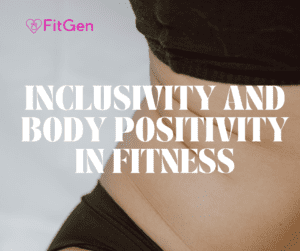
In recent years, the fitness industry has undergone a significant transformation. A growing movement emphasizes inclusivity and body positivity, challenging traditional norms and advocating for a more welcoming environment for all individuals, regardless of shape, size, age, gender, or ability. This shift is not just a trend; it’s a necessary evolution that recognizes the diversity of bodies and the importance of mental and emotional well-being in conjunction with physical health.
Understanding Inclusivity in Fitness
What Is Inclusivity?
Inclusivity in fitness means creating spaces, programs, and communities where everyone feels welcome and supported. It acknowledges that fitness is for every body, not just those who fit a particular mold or aesthetic ideal. This approach dismantles barriers that have historically excluded people based on factors like:
- Body Size and Shape
- Age
- Gender Identity and Expression
- Race and Ethnicity
- Physical Abilities and Disabilities
- Fitness Level
Why Inclusivity Matters
- Promotes Health Equity: Everyone deserves the opportunity to pursue health and wellness goals without facing discrimination or prejudice.
- Enhances Community: Inclusive environments foster a sense of belonging and support, which can improve motivation and adherence to fitness programs.
- Challenges Stereotypes: By embracing diversity, we challenge societal norms and stereotypes about who can be fit and what fitness looks like.
Embracing Body Positivity
What Is Body Positivity?
Body positivity is a social movement rooted in the belief that all people should have a positive body image, regardless of societal standards. It encourages individuals to love and accept their bodies as they are, celebrating differences rather than conforming to unrealistic ideals.
The Impact of Body Positivity in Fitness
- Improves Mental Health: A positive body image is linked to higher self-esteem and lower rates of depression and anxiety.
- Enhances Motivation: When individuals focus on how exercise makes them feel rather than solely on appearance, they are more likely to stick with their fitness routines.
- Reduces Discrimination: Promoting body positivity helps combat weight stigma and discrimination in fitness spaces.
The Intersection of Inclusivity and Body Positivity
Inclusivity and body positivity are interconnected concepts that, when embraced together, create a more supportive and effective fitness environment.
- Holistic Approach to Health: Recognizes that wellness is multifaceted, involving physical, mental, and emotional health.
- Empowers Individuals: Encourages people to set personal goals based on their abilities and desires, not societal pressures.
- Builds Supportive Communities: Fosters environments where everyone uplifts one another, enhancing collective well-being.
Practical Ways to Foster Inclusivity and Body Positivity in Fitness
1. Language Matters
- Use Inclusive Language: Avoid terms that may alienate or shame individuals. Focus on strength, health, and personal growth.
- Promote Body-Neutral Language: Emphasize what bodies can do rather than how they look.
2. Diverse Representation
- Imagery and Marketing: Use images that represent a variety of body types, ages, races, and abilities.
- Role Models and Instructors: Hire and promote trainers from diverse backgrounds to provide relatable role models.
3. Accessible Fitness Options
- Adaptive Programs: Offer modifications for different abilities and fitness levels.
- Affordable Pricing: Provide sliding scale fees or community classes to make fitness accessible to more people.
- Flexible Scheduling: Accommodate various lifestyles and commitments.
4. Create a Welcoming Environment
- Inclusive Facilities: Ensure spaces are physically accessible (ramps, elevators, etc.) and provide amenities like gender-neutral restrooms.
- Zero Tolerance Policies: Implement policies against harassment, discrimination, and body shaming.
5. Encourage a Health-First Approach
- Shift Focus from Appearance to Health: Emphasize the health benefits of fitness, such as increased energy, improved mood, and better sleep.
- Personalized Goals: Support clients in setting individualized goals that align with their personal values and needs.
6. Education and Awareness
- Staff Training: Provide training on inclusivity, cultural competence, and sensitivity.
- Community Education: Host workshops and seminars on body positivity and inclusive practices.
Benefits of Inclusivity and Body Positivity in Fitness
- Increased Participation: More people feel welcome to join fitness programs, expanding your client base.
- Better Client Retention: Supportive environments encourage clients to stay committed to their fitness journey.
- Positive Reputation: Establishes your brand or facility as a leader in promoting equality and well-being.
Conclusion: Moving Forward Together
Embracing inclusivity and body positivity in fitness is not just a moral imperative but also enhances the effectiveness and reach of fitness programs. By creating environments where everyone feels valued and supported, we can help more individuals achieve their wellness goals and foster a healthier, happier society.
At Fit Generation – Healthy Living, we are committed to promoting inclusivity and body positivity. Our programs are designed to support individuals of all backgrounds and abilities. Join us in creating a fitness community where every body is celebrated.
